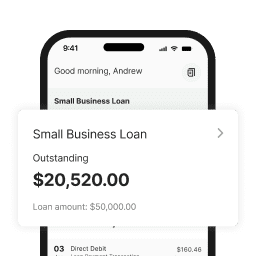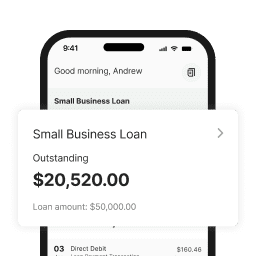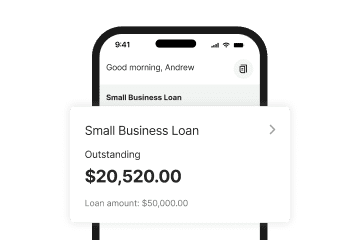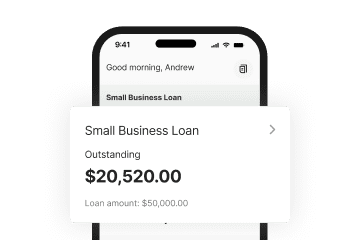Cash Flow Forecast Guide
Gain the knowledge and tools you need to take control of your finances with this in-depth guide on cash flow forecasting. Discover why effective cash flow management matters and how to build accurate forecasts that support your business goals.
- Access up to $500K in capital for steady cash flow
- Fast-track funding—Same-day approval for funds
- Flexible credit solutions tailored to your business

What is Cash Flow, and Why Does It Matter?
Cash flow refers to the movement of money in and out of a business over a specific period. It is a crucial indicator of a company’s financial health, reflecting its ability to generate revenue and manage expenses effectively. Understanding cash flow is vital for all businesses, particularly those in the trades and professional services sectors, where cash flow can be irregular due to project-based income or seasonal demand fluctuations.
How Can a Cash Flow Forecast Help a Business?
Financial Planning:
Cash flow forecasting aids in effective financial planning by predicting future inflows and outflows. This allows businesses to create budgets, allocate resources, and manage expenses efficiently, identifying potential cash shortages or surpluses for better decision-making.
Decision Making:
Accurate forecasts empower business owners to make informed decisions regarding hiring, equipment purchases, or service expansions. If a forecast shows a cash surplus, they may invest in growth; if shortfalls are expected, they can adjust spending to mitigate risks.
Risk Management
A well-prepared cash flow forecast is a safety net, helping businesses anticipate shortages and plan for unexpected expenses. Understanding cash flow dynamics enables owners to develop contingency plans, ensuring they have the resources needed to navigate financial challenges and maintain stability.
Need a reliable funding solution to keep your cash flow positive? Consider Prospa’s Small Business Loan, which provides fast, flexible financing for day-to-day operations or unexpected expenses.
Borrow from $5K up to $150K
Funding possible within hours
Easy application
Apply in 10 minutes with minimal paperwork
No upfront security
No need to put your house or other assets down as security to access up to $150K in Prospa funding
Flexible terms
Make unlimited extra repayments to save on interest and pay off your loan faster
Understanding Cash Flow Forecasting
Cash flow forecasting isn’t just a financial exercise; it’s a strategy to help you confidently plan for growth and stability. Each industry, from trades to retail, has unique cash flow components:
- Cash Inflows: Money coming into the business, including client payments, sales, and loans.
- Cash Outflows: Money leaving the business, covering operational costs such as materials, labour, rent, and utilities.
- Net Cash Flow: The difference between inflows and outflows, which should ideally remain positive to support business health.
Cash flow components may vary by industry. For example, trades businesses should consider materials and subcontractor fees, while consultants may focus on project fees and other operating expenses. Use these insights to build a forecast that reflects your business model.
Key Components of Cash Flow
| Component | Description | Example |
|---|---|---|
| Cash Inflows | Money coming into the business, including sales, client payments, and loans. This indicates the financial resources available for operation and growth. | $100,000 |
| Cash Outflows | Money going out of the business, covering costs like materials, salaries, rent, and operational expenses. Tracking outflows is essential for maintaining liquidity and fulfilling obligations. | $70,000 |
| Net Cash Flow | The difference between cash inflows and outflows represents the actual change in cash position over the period. Positive net cash flow indicates a healthy financial state, while negative net cash flow can signal potential issues. | $30,000 |
Adapting Forecasts for Financial Agility
Regularly updating your cash flow forecast helps you stay agile and responsive to financial changes, enabling you to adjust for unexpected costs or shifts in revenue. This proactive approach allows you to make informed decisions that protect your business's financial health, positioning it to adapt swiftly and capitalise on new opportunities.
Looking to optimise your cash flow? Prospa’s Cash Flow Forecast Calculator helps you easily visualise and manage cash outflows.


01
Apply Online
Apply Online

02
Fast Decision
Fast Decision

03
Receive Funds
Receive Funds
Operating Cash Flow Explained
Operating cash flow (OCF) represents the cash generated from a business’s core activities, such as sales of goods or services, minus day-to-day expenses. Unlike net income, which may include non-cash items like depreciation, OCF focuses on actual cash inflows and outflows, clearly showing a business’s operational health.
Here’s a breakdown of critical components that make up operating cash flow:
| Component | Description | Example |
|---|---|---|
| Revenue | Total income from sales or services. | $500,000 |
| Operating Expenses | Day-to-day expenses of running the business. | $300,000 |
| Net Operating Income | Revenue minus Operating Expenses. | $200,000 |
Operating Cash Flow Ratio Calculator
Our Cash Flow Forecast Calculator is a powerful, ready-to-use spreadsheet designed to keep you on top of cash outflows and pinpoint areas where you may need a financial boost. This tool provides a simple yet effective solution to your forecasting needs and is perfect for starting your financial planning.
Features include:
- Quick, straightforward forecasting with immediate insights into your cash flow
- Drop-down options for multiple payment types to easily customise categories
- Colour-coded alerts to signal when cash balances fall below a set minimum
- Detailed monthly reports on income and expenses, adaptable to your specific needs
Dynamic integration into a living business plan that evolves alongside your business

Step-by-Step Guide to Creating a Cash Flow Forecast for Sole Traders
Step 1 - Gather Financial Data
Let’s say you’re a sole trader builder conducting a cash flow forecast for tax season. Start by gathering all relevant financial data. Sources include:
- Invoices: Collect all invoices issued to clients for completed and ongoing projects. This will provide insight into expected cash inflows.
- Receipts: Gather receipts for all expenses incurred, including materials, tools, and subcontractor payments.
- Bank Statements: Review bank statements for the past year to track actual income and expenses, helping to identify trends in cash flow.
Previous Tax Records: Examine past tax returns to understand seasonal income patterns and tax obligations, which can inform future projections.
Step 2 - Estimate Future Income
Next, estimate future income based on a variety of factors:
- Ongoing Projects: Assess the current state of ongoing projects and the expected completion dates to project cash inflows.
- Expected New Contracts: Evaluate potential new contracts in the pipeline. This could involve bidding on upcoming jobs or projects with clients who have expressed interest.
Seasonal Demand Fluctuations: Consider seasonal trends in the construction industry. For example, many clients may prefer to start renovations in spring and summer, increasing income during these months.
Step 3 - Identify Fixed and Variable Costs
Make sure you understand the distinction between different costs:
- Fixed Costs: These are expenses that remain consistent each month, such as:
- Equipment Maintenance: Regular maintenance costs for tools and machinery that are predictable and can be planned within the budget.
- Insurance Payments: Monthly or annual premiums for liability insurance that do not change based on project volume.
- Variable Costs: These expenses can fluctuate based on project activity, including:
- Materials: Costs for concrete, timber, or other materials that vary depending on project requirements.
Subcontractor Fees: Payments made to subcontractors that may vary based on the number of projects or the scope of work.
Step 4 - Factor in Seasonal Expenses and Revenues
You should also account for seasonal variations in expenses and revenues:
- High and Low Activity Periods: Months when construction activity typically peaks (e.g. warmer months) versus slower periods (e.g. winter).
- Potential Project Delays: Weather conditions can affect cash flow if expected income is postponed.
Additional Costs: Heating during colder months or any seasonal staff hired to manage increased workloads.
Step 5 - Calculate Net Cash Flow for Tax Season
Once all inflows and outflows have been identified, you can calculate your net cash flow. For example:
- Total Cash Inflows: You sum all expected income from ongoing projects, new contracts, and seasonal sales and anticipate $140,000 in income.
- Total Cash Outflows: You sum all fixed and variable costs, including equipment maintenance, materials, and subcontractor fees, estimating around $70,000 in expenses.
- Net Cash Flow Calculation: Subtract total cash outflows from cash inflows to determine the net cash flow.
Net Cash Flow = Total Cash Inflows − Total Cash Outflows
Net Cash Flow = $140,000 − $70,000
Net Cash Flow = $50,000
This net cash flow of $50,000 will help you set aside the necessary funds for tax obligations, ensuring you can meet your financial responsibilities when tax season arrives.
Step 6 - Review and Adjust Forecast Regularly
If economic conditions change or demand shifts, revise the forecast proactively to maintain accuracy. For instance, if a new project comes in, update the forecast to reflect this additional income and adjust outflows accordingly. By continuously reviewing the cash flow, you can ensure you’re on track to meet tax obligations and avoid surprises at tax time.
Need extra support to keep your cash flow steady? Explore Prospa’s Line of Credit for flexible funding options that adapt as your business grows.

Easily manage
on the go

Stay on top of your repayments

Take your business further








